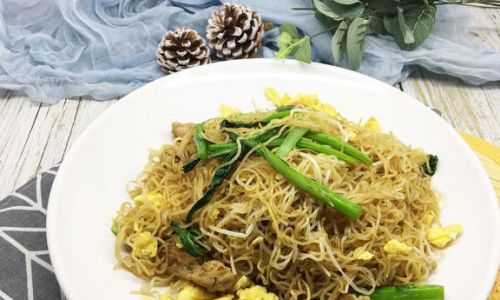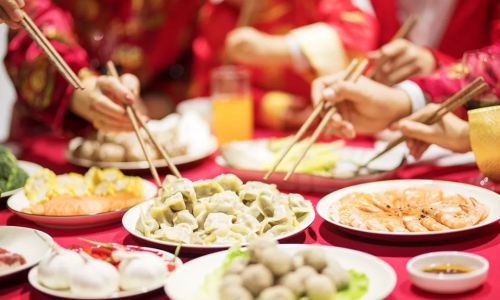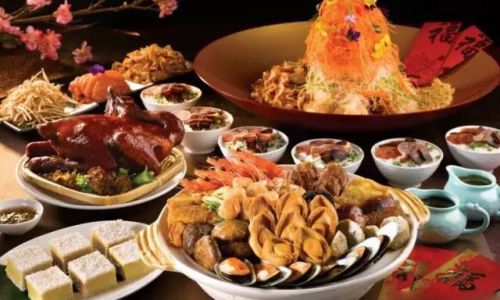Stir-fried noodles, a cornerstone of Asian cuisine, have captured the hearts and palates of food lovers worldwide. From the smoky streets of Bangkok to the bustling night markets of Hong Kong, this versatile dish adapts to local ingredients and flavors, making it a global favorite. Whether you’re a busy parent, a college student, or a home cook looking to expand your repertoire, mastering the art of stir-fried noodles is a game-changer. This article will guide you through creating a restaurant-quality dish in under 30 minutes, using simple techniques and accessible ingredients. We’ll explore everything from noodle selection to sauce mastery, ensuring your next stir-fry is flavorful, aromatic, and perfectly cooked.
The Foundation: Choosing the Right Noodles
The first step to stir-fried noodle perfection lies in selecting the right type of pasta. While options like spaghetti or fettuccine can work in a pinch, authentic Asian noodles offer a superior texture and flavor. Here’s a breakdown of popular choices:
- Rice Noodles: Thin, flat, and gluten-free, these are ideal for dishes like Pad Thai or Singapore-style noodles. Soak them in warm water before stir-frying to prevent stickiness.
- Egg Noodles: Fresh or dried, these wheat-based noodles (common in Chow Mein or Lo Mein) have a springy texture. Cook them al dente to avoid mushiness.
- Udon Noodles: Thick, chewy wheat noodles popular in Japanese cuisine. Their sturdy structure holds up well in bold sauces.
- Glass Noodles (Cellophane Noodles): Made from mung bean starch, these transparent noodles absorb flavors beautifully. Use them in soups or light stir-fries.
Pro Tip: Always follow the package instructions for cooking times. Overcooked noodles become gummy and break apart during stir-frying.

Essential Ingredients for Flavor Balance
Stir-fried noodles thrive on harmony: a balance of salty, sweet, umami, and aromatic notes. Stock your pantry with these staples:
- Aromatics: Garlic, ginger, and shallots form the flavor base. Mince or grate them for maximum release.
- Proteins: Chicken, shrimp, beef, or tofu add substance. Slice meat thinly for quick cooking; press tofu to remove excess moisture.
- Vegetables: Use a mix of textures—crisp (bell peppers, carrots), tender (snap peas, mushrooms), and crunchy (bean sprouts, cabbage). Julienne or thinly slice for even cooking.
- Sauces: The trifecta of soy sauce, oyster sauce, and sesame oil creates depth. For heat, add chili paste or Sriracha.
- Oil: Neutral oils like vegetable or peanut work best for high-heat cooking. Reserve sesame oil for finishing touches.
Preparation: The Key to Efficiency
Stir-frying is a fast-paced cooking method, so prep work is non-negotiable. Follow these steps for a stress-free experience:
- Mise en Place: Chop all vegetables, measure sauces, and pre-cook proteins in advance. Once the wok is hot, there’s no time to pause.
- Noodle Prep: Cook noodles according to instructions, then rinse under cold water to stop cooking. Toss with a drizzle of oil to prevent sticking.
- Sauce Mixing: Combine soy sauce, oyster sauce, sugar, and a splash of broth or water in a small bowl. This ensures even distribution during cooking.
The Stir-Fry Technique: Heat, Speed, and Tossing
Achieving that coveted wok hei (breath of the wok) requires mastery of heat and motion. Here’s how:
- Preheat Your Wok: Use a carbon-steel or cast-iron wok over high heat. Add oil only when it’s smoking hot—this prevents sticking and sears ingredients quickly.
- Aromatics First: Fry garlic and ginger for 10 seconds until fragrant. Burnt aromatics will ruin the dish, so act fast!
- Protein and Vegetables: Add proteins and cook until nearly done. Toss in hard vegetables first (carrots, broccoli), followed by quicker-cooking ones (spinach, mushrooms).
- Noodles and Sauce: Push ingredients to the side, add a touch more oil, then toss in noodles. Pour the sauce over and fold everything together using tongs or a spatula.
- Finish Strong: For caramelization, let the noodles sit undisturbed for 20–30 seconds before tossing again. Garnish with herbs, nuts, or a squeeze of lime.
Common Mistakes to Avoid:
- Overcrowding the pan: Cook in batches if needed to maintain high heat.
- Under-seasoning: Taste and adjust sauce before serving.
- Overcooking vegetables: They should retain a slight crunch.
Customization: Make It Your Own
The beauty of stir-fried noodles lies in their adaptability. Experiment with:

- Proteins: Try edamame, tempeh, or scrambled eggs.
- Vegetables: Zucchini, bok choy, or water chestnuts add variety.
- Sauces: Swap soy sauce for tamari (gluten-free) or add hoisin for sweetness.
- Toppings: Crushed peanuts, cilantro, or pickled ginger elevate the dish.
Regional Variations to Explore
- Thai Pad Thai: Toss rice noodles with tamarind paste, fish sauce, and palm sugar. Top with crushed peanuts and lime wedges.
- Chinese Chow Mein: Use egg noodles, soy sauce, and a medley of vegetables. Add char siu pork for authenticity.
- Japanese Yakisoba: Incorporate cabbage, carrots, and Worcestershire sauce. Finish with aonori seaweed and beni shoga pickles.
- Singaporean Mee Goreng: Spice it up with ketchup, chili paste, and shrimp. Garnish with a fried egg.
Troubleshooting Guide
- Mushy Noodles: Reduce cooking time or use thicker noodles.
- Bland Flavor: Increase sauce quantities or add a splash of vinegar for brightness.
- Burnt Bits: Lower the heat slightly and stir more frequently.
The Final Touch: Presentation and Pairing
A visually appealing dish enhances the dining experience. Arrange noodles on a platter, scatter herbs or sesame seeds on top, and serve with a side of pickled vegetables or a crisp cucumber salad. Pair with iced tea, jasmine rice, or a light beer for a complete meal.
Conclusion: Practice Makes Perfect
Stir-fried noodles are a blank canvas for creativity. Don’t be afraid to experiment with ingredients or techniques—each attempt brings you closer to mastery. Remember, the best dishes are made with confidence and a dash of intuition. So grab your wok, crank up the heat, and let the sizzle begin!
Word Count: 1,650+
This comprehensive guide equips you with the knowledge to craft stir-fried noodles that rival your favorite restaurant’s version. With practice, you’ll learn to balance flavors, textures, and aromas effortlessly. Whether you’re cooking for one or a crowd, this dish promises satisfaction with every bite. Happy stir-frying!






0 comments